Kumano Hongu Taisha, one of the most revered shrines in Japan, reveals a rich history and spiritual significance. Let’s journey through the area to learn about its ancient rituals and stunning architecture that continues to attract visitors seeking enlightenment.
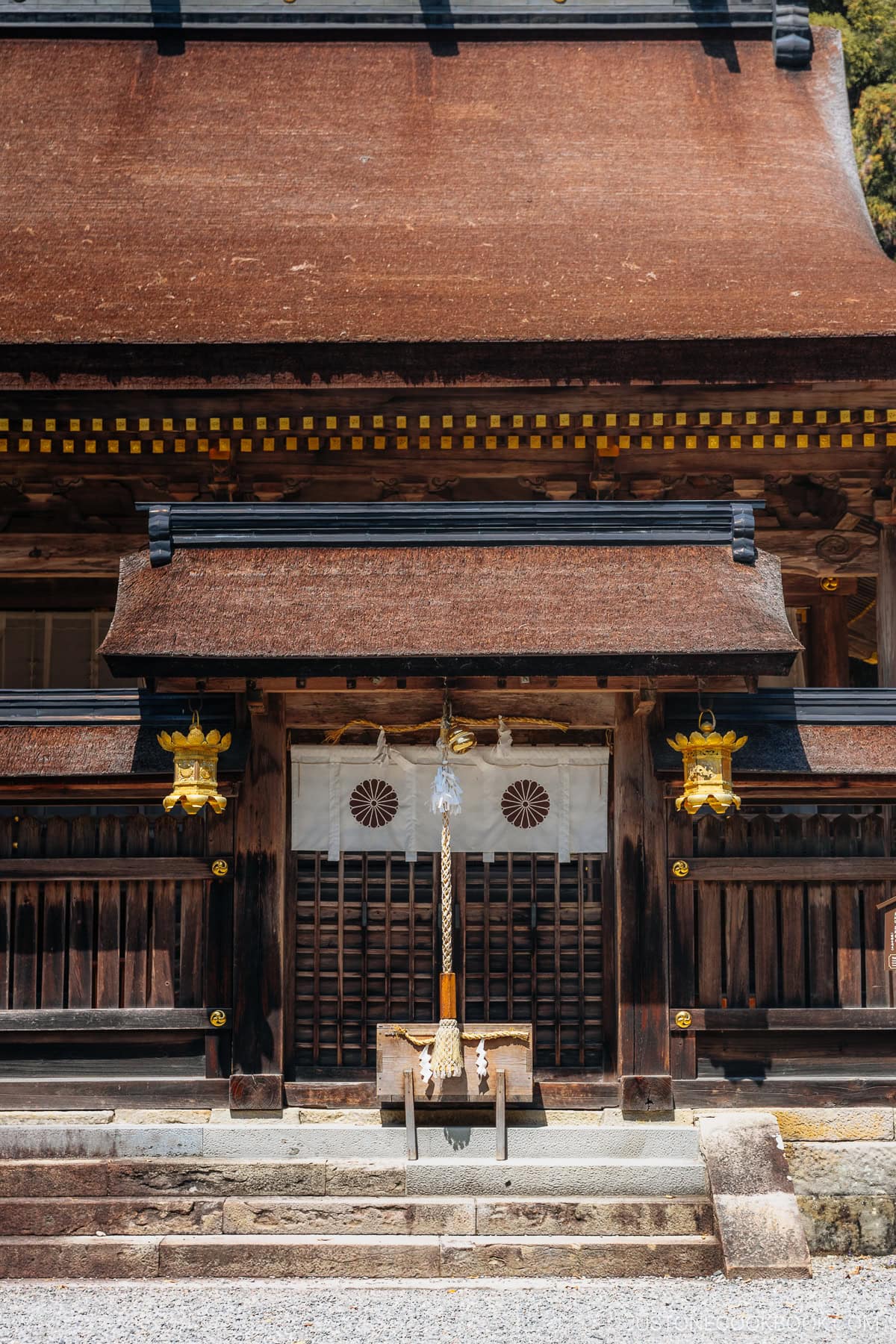

Set amidst the tranquil vistas of Wakayama Prefecture, Japan, rests the esteemed Kumano Hongu Taisha, also known as the Kumano Grand Shrine. This sacred Shinto sanctuary carries a profound heritage and spiritual resonance, standing as an integral component of the Kumano Sanzana trio of distinguished shrines. It also serves as the head of over 3000 Kumano shrines across Japan, making it a focal point for pilgrims journeying along the ancient Kumano Kodo pilgrimage routes.
Its majestic torii gate, the largest in Japan, captivates travelers and pilgrims alike, beckoning them to embark on a profound journey of self-discovery and spiritual awakening.
In my other post, we visited the first of the three grand shrines, Kumano Nachi Taisha at Nachi Waterfall; you can read about it here!
With so much history, legends, and mystery waiting to be uncovered, it’s time to get exploring!
What is the Kumano Kodo?
For over 1,000 years, the mountainous region of Kumano has been revered as the mythical ‘land of the gods.’ During the Heian Era (794 – 1185), members of the imperial household undertook a grueling journey from the old capital, Kyoto, to this secluded area. This arduous pilgrimage spanned over 30 days, driven by the hope of discovering heaven on earth. Within the Kumano region, the three grand shrines were established: Kumano Hongu Taisha, Kumano Nachi Taisha, and Kumano Hayatama Taisha, collectively known as the Kumano Sanzan.
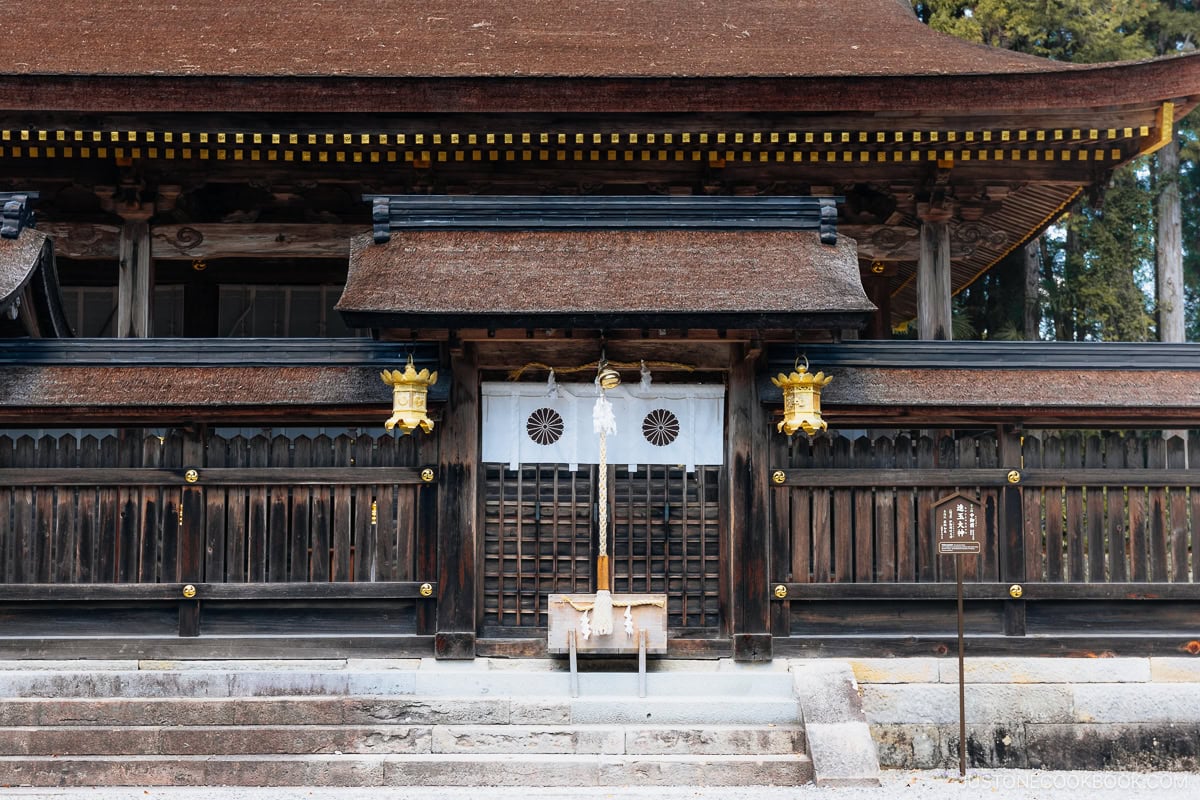

These three shrines combined the Shintoism and Buddhism faiths, a practice known as Shinbutsu-shugo. This continued until the Meiji government issued a proclamation ordering the separation of the two religions in 1868.
The Kumano Kodoa network of pilgrimage routes spanning the Kii mountain range and connecting the Kumano Sanzan, is more than just a physical journey. It is a path believed to offer a transformative spiritual experience and great merit. Historically sought after by members of the imperial family and emperors, this journey is now pursued by people from all corners of the globe.
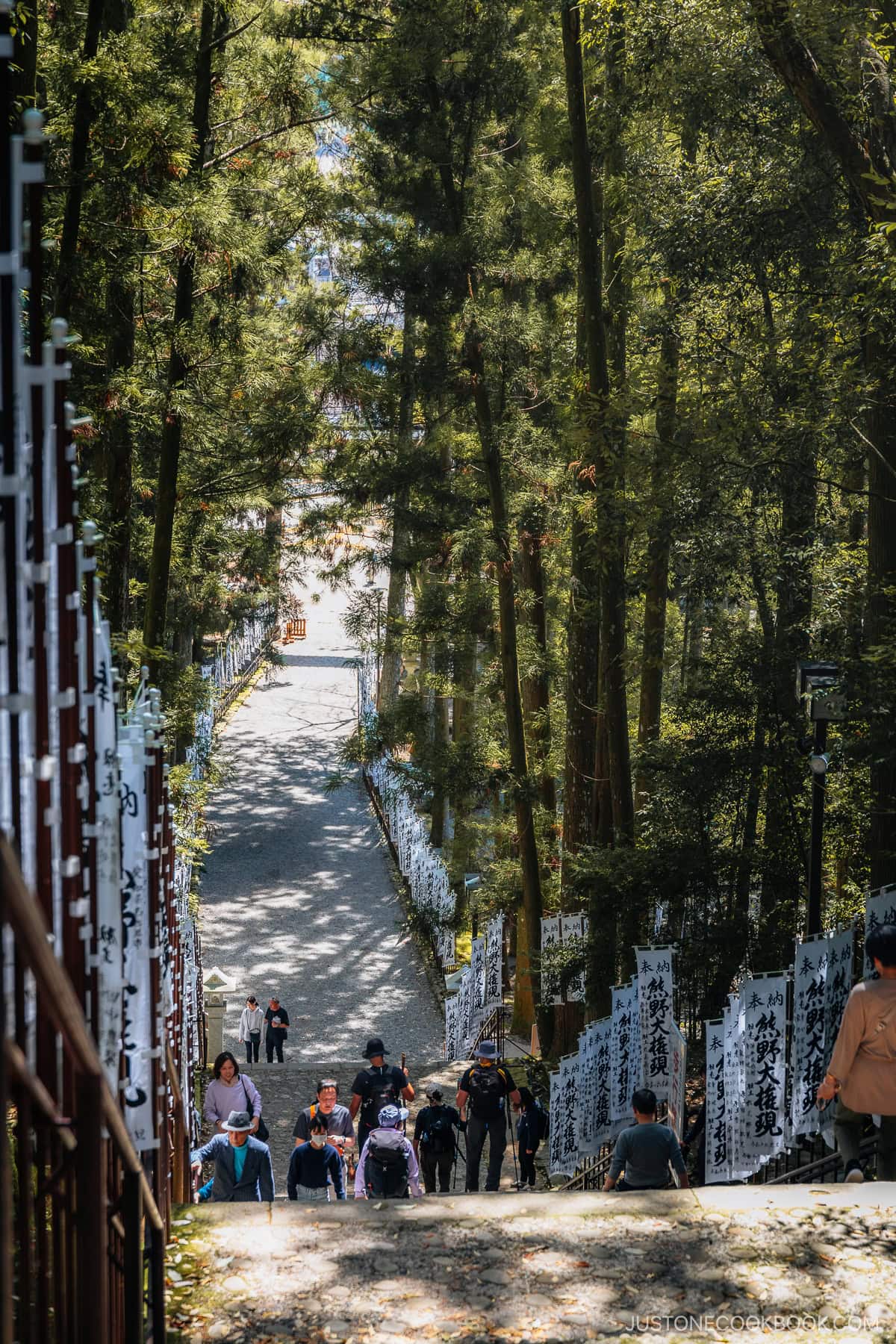

In a testament to their historical and cultural significance, the Kumano Kodo was granted UNESCO World Heritage status in July 2004. It is now included in the ‘Sacred Sites and Pilgrimage Routes in the Kii Mountain Range’.
How to Get to Kumano Hongu Taisha
Kumano Hongu Taisha can be accessed by bus from three locations. However, there is limited availability, so please check the bus timetables and plan accordingly.
From Goto Station
If you are exploring around the Nara region, this is the best option. From Goto Station, board the no. 301 bus, which takes you to Hongu Taisha-mae bus stop. The journey takes approximately five hours and costs 3250 yen one way (prices in 2024). You can view the timetable here.
From Shingu Station
From the east coast of Wakayama Prefecture, you can board either the no. 51, 53, 90, or 302 bus from Shingu Station to Hongu Taisha-mae bus stop. The journey takes approximately 70 minutes and costs 1560 yen one way. Along the way, there are three popular onsen—Kawayu, Wataze, and Yunomine Onsen—that visitors can stop by. Not all buses make stops at these onsen, so it’s advisable to check the timetable according to your itinerary.
From Kii Tanabe Station
Finally, from the west coast of Wakayama Prefecture, board bus no. 81, 85, 91, or 95 from Kii Tanabe Station. It will take just over two hours to Hongu Taisha-mae bus stop. A one-way trip costs 2100 yen. You can view the full timetable here.
By Car
I always recommend driving in Japan, especially if you are in a group. If you’re unsure about driving in Japan, check out our Japan Driving Guide. While tolls can be expensive, sharing the cost between 2-4 people can make it very cost-efficient. Plus, you can explore wherever and whenever you want. Driving through the mountains of the Kumano region is particularly special, with non-stop breathtaking views along the way.
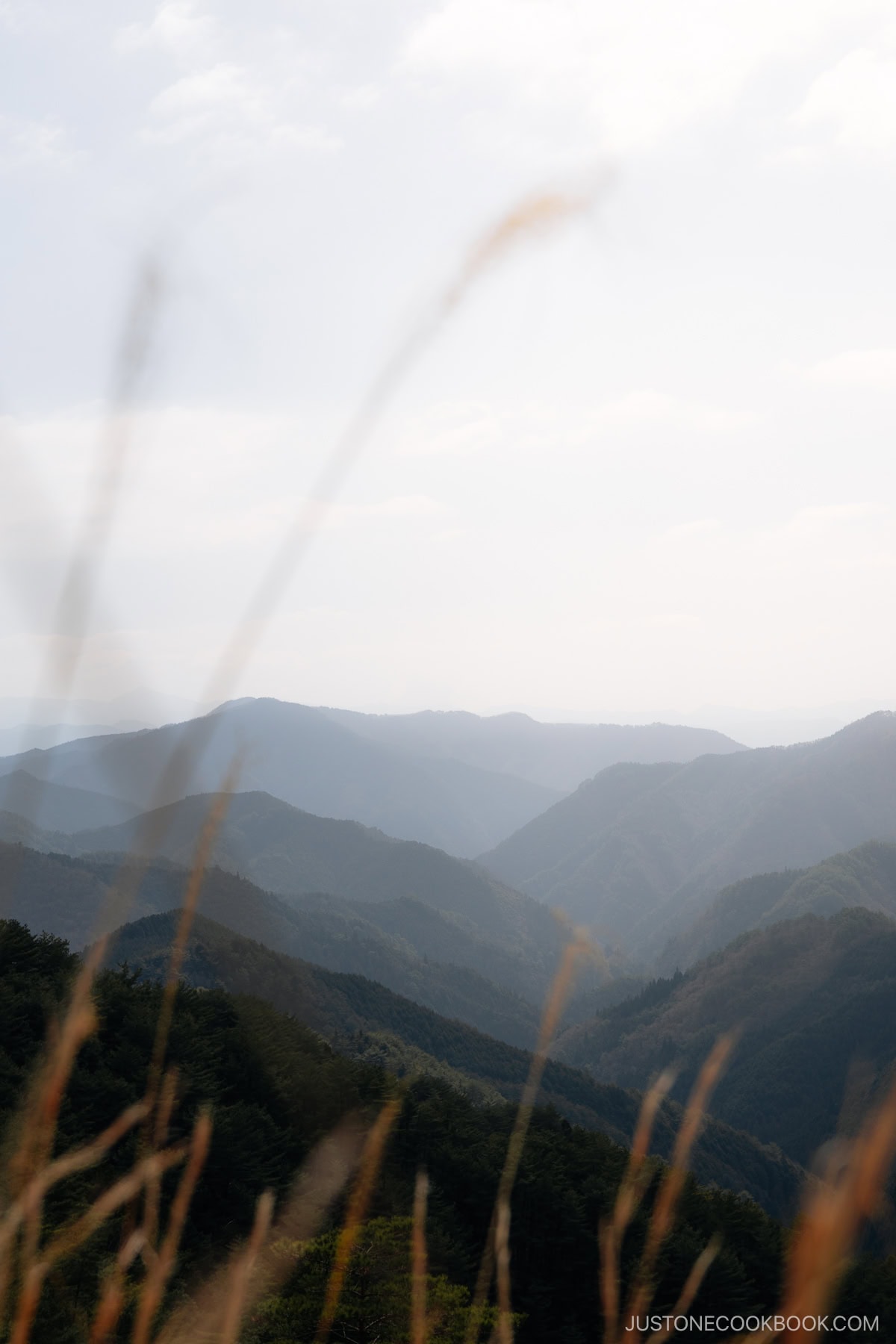

Kumana Yes Taisha
Hidden among the tall cypress trees, you’ll find the entrance to Kumana Yes Taisha marked by a large torii gate.
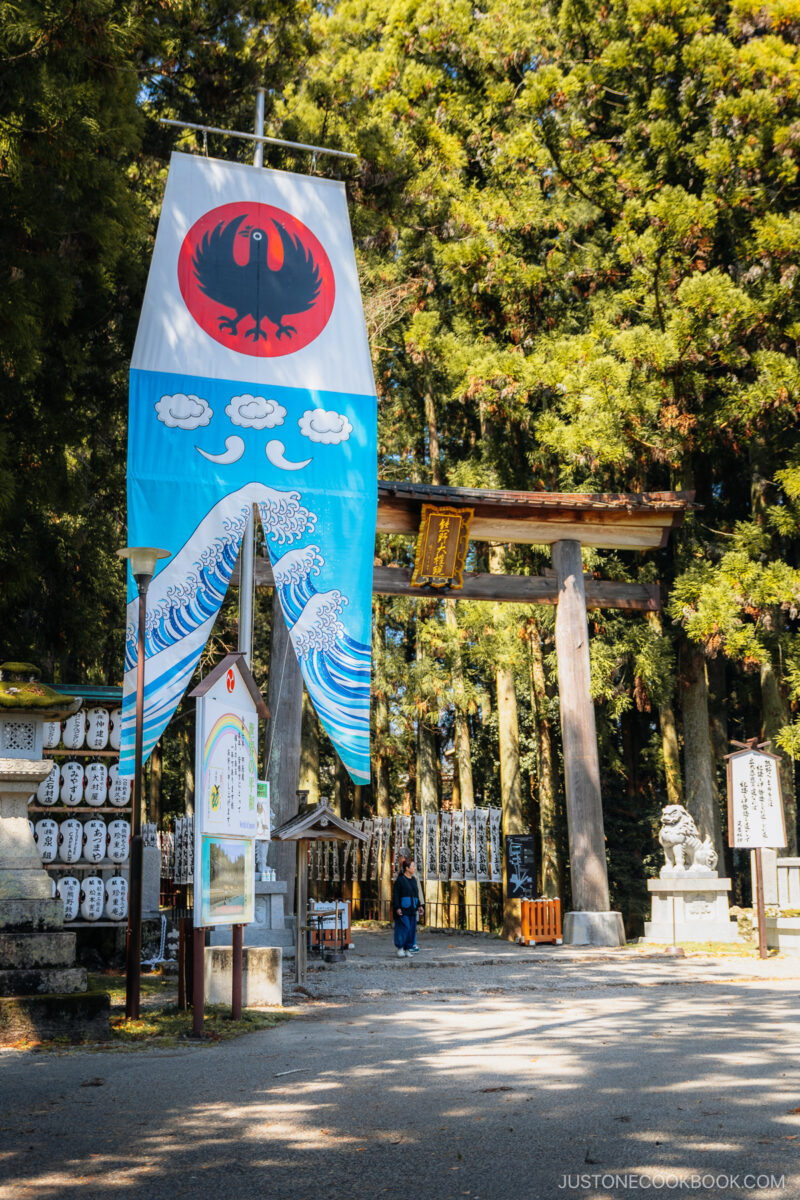

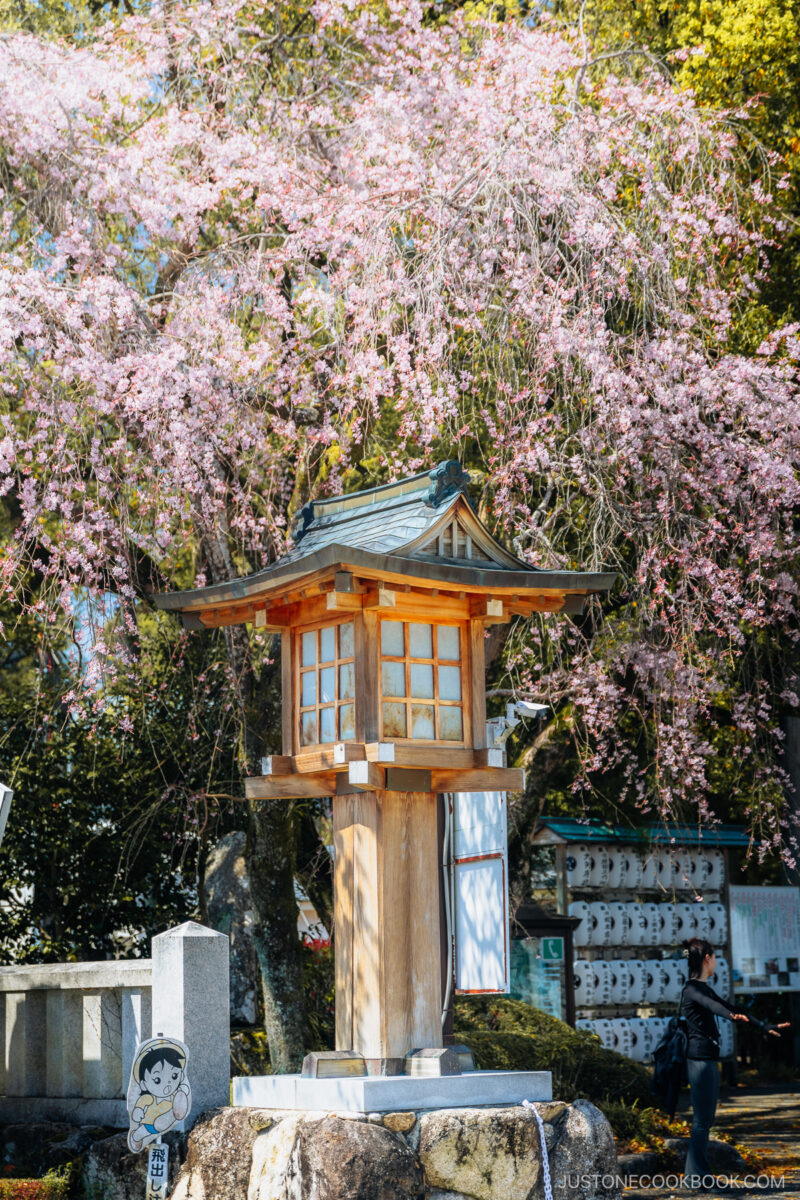

As you step through the torii gateway, you’ll feel the shrine’s immense history with the fluttering of flags and towering cedar trees, creating a sense of allure, wonder, and serenity.
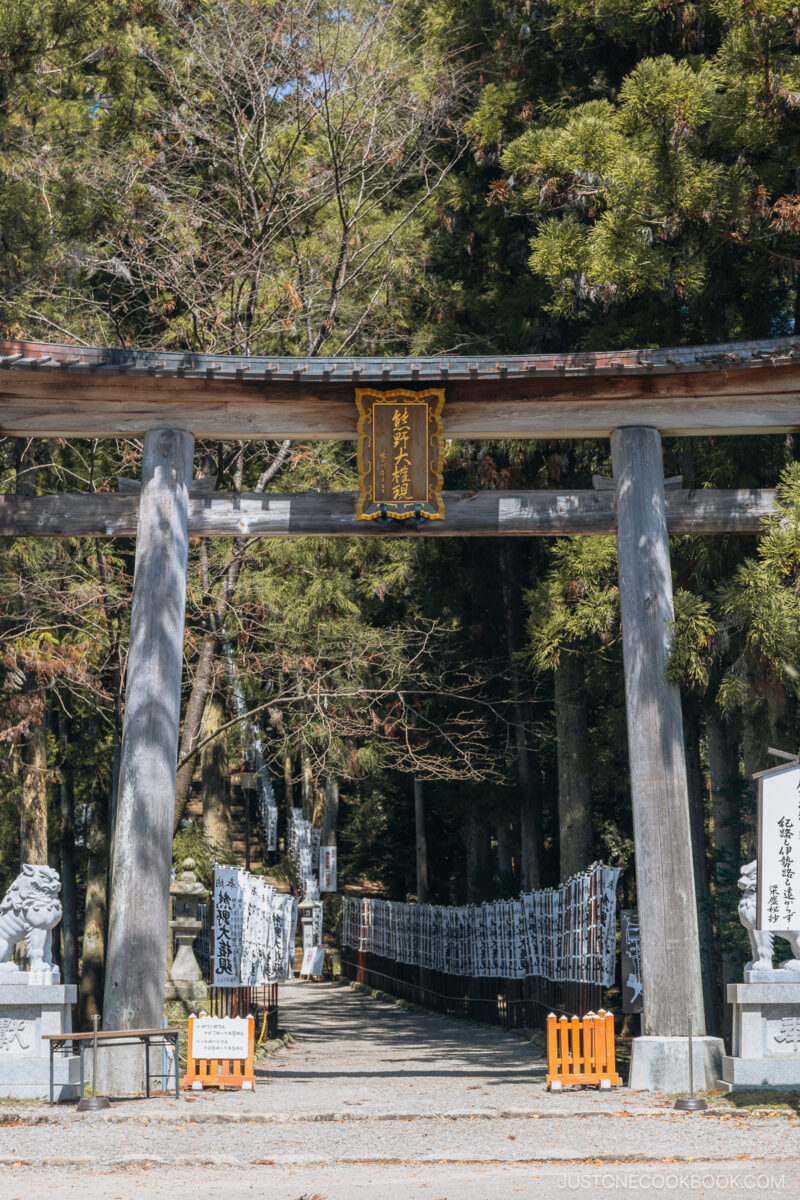

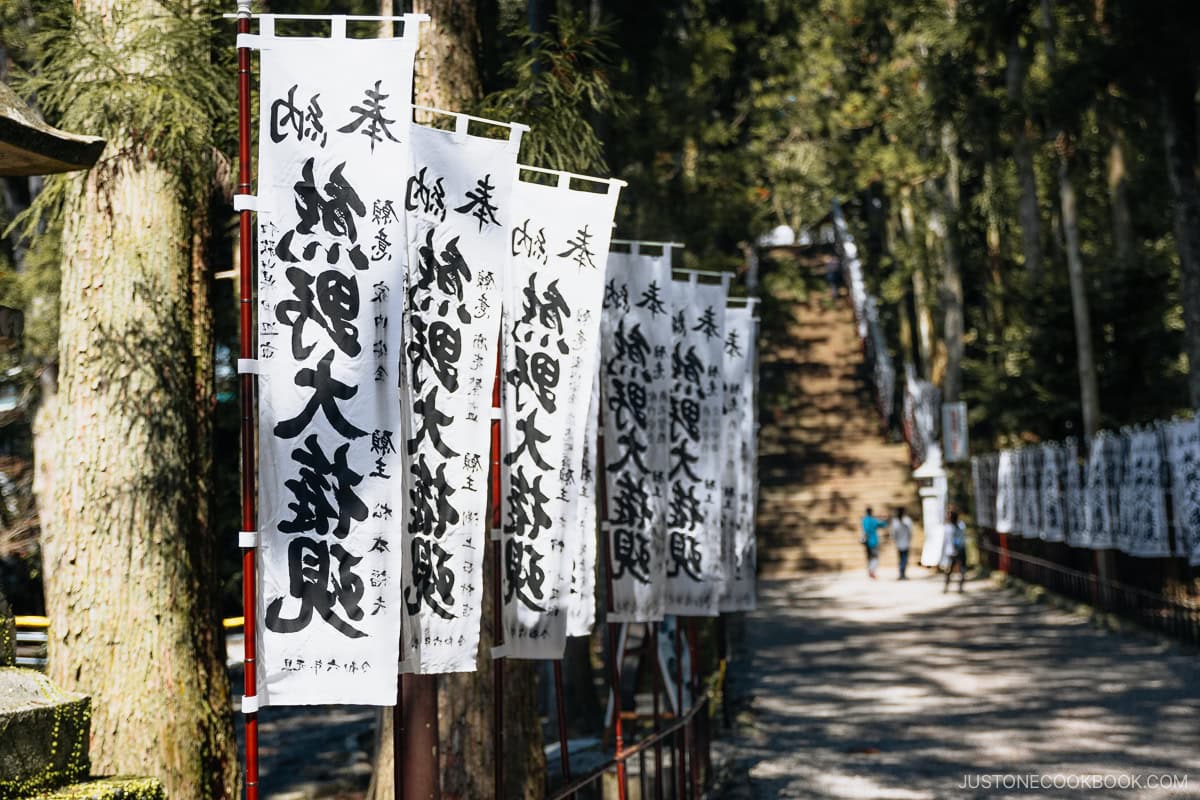

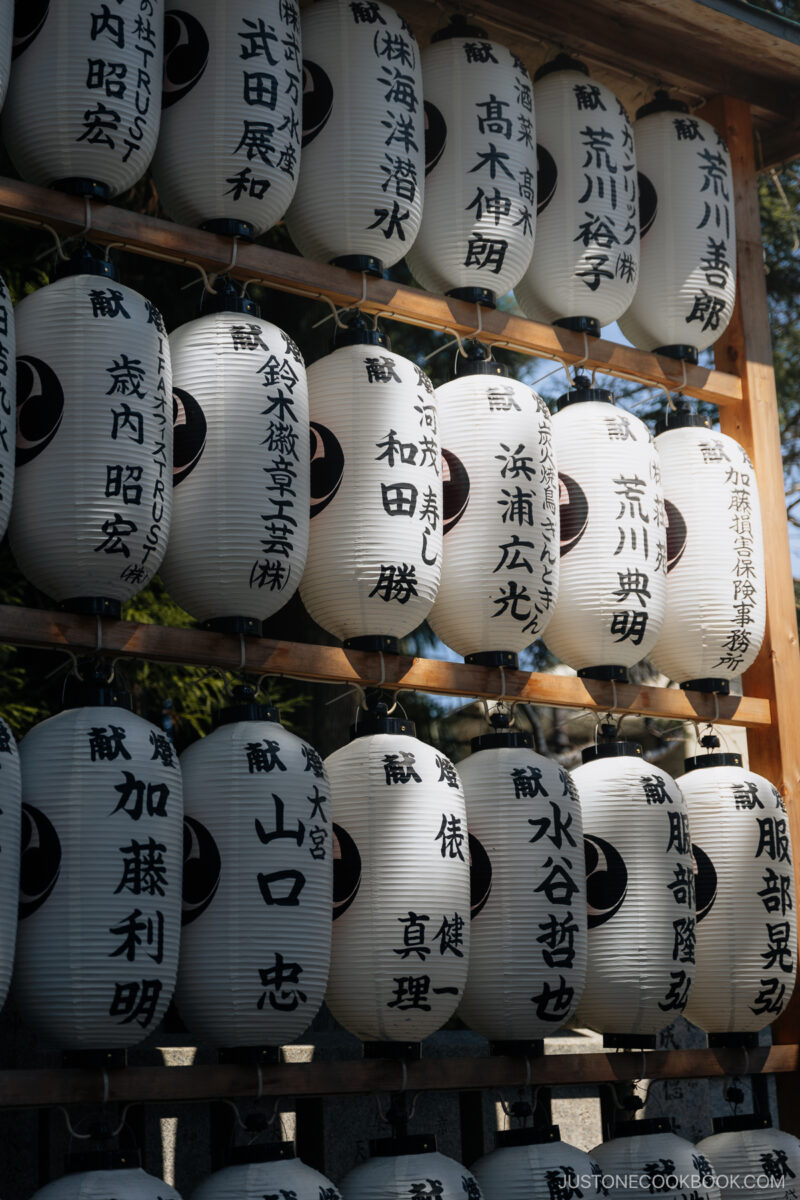

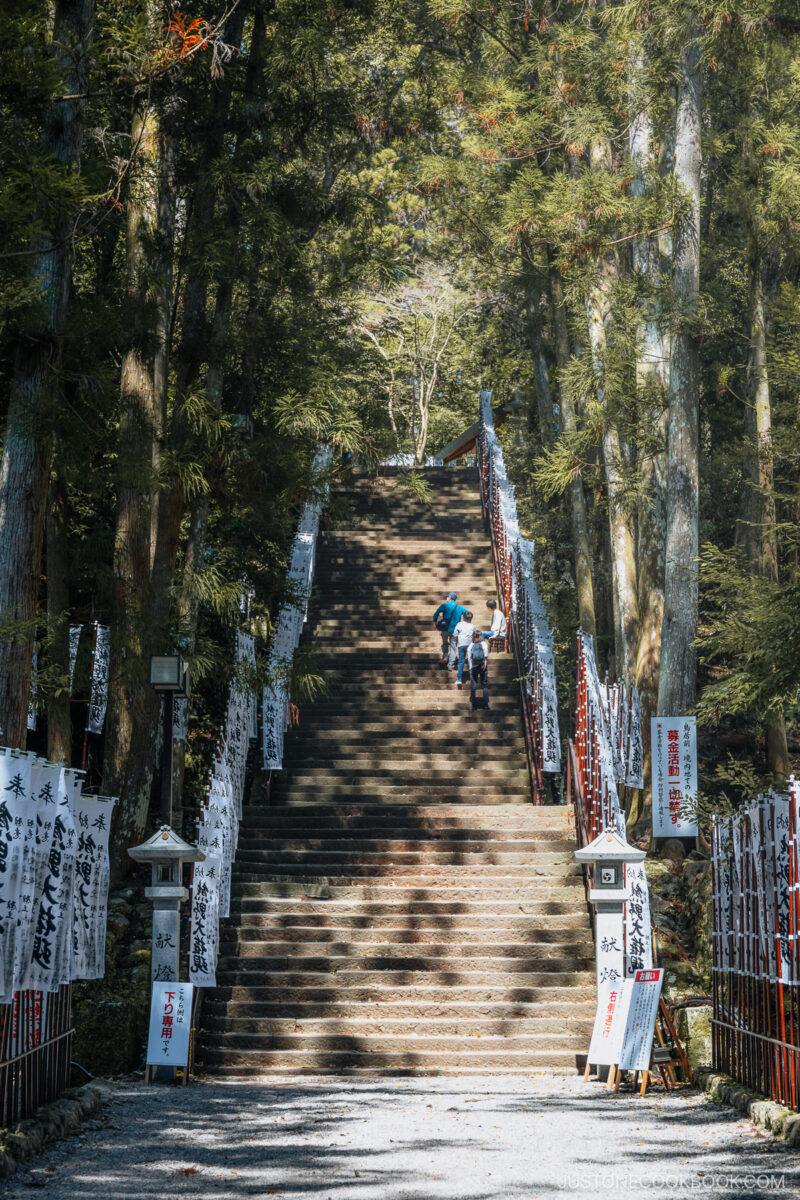

Halfway up the 158 stone steps, purify yourself at the Chozuya (water basin) under the watchful eye of Yatagarasu, the three-legged crow. Check out my Japan shrines and temples etiquette guide to learn the proper etiquette when visiting Japan’s shrines and temples.
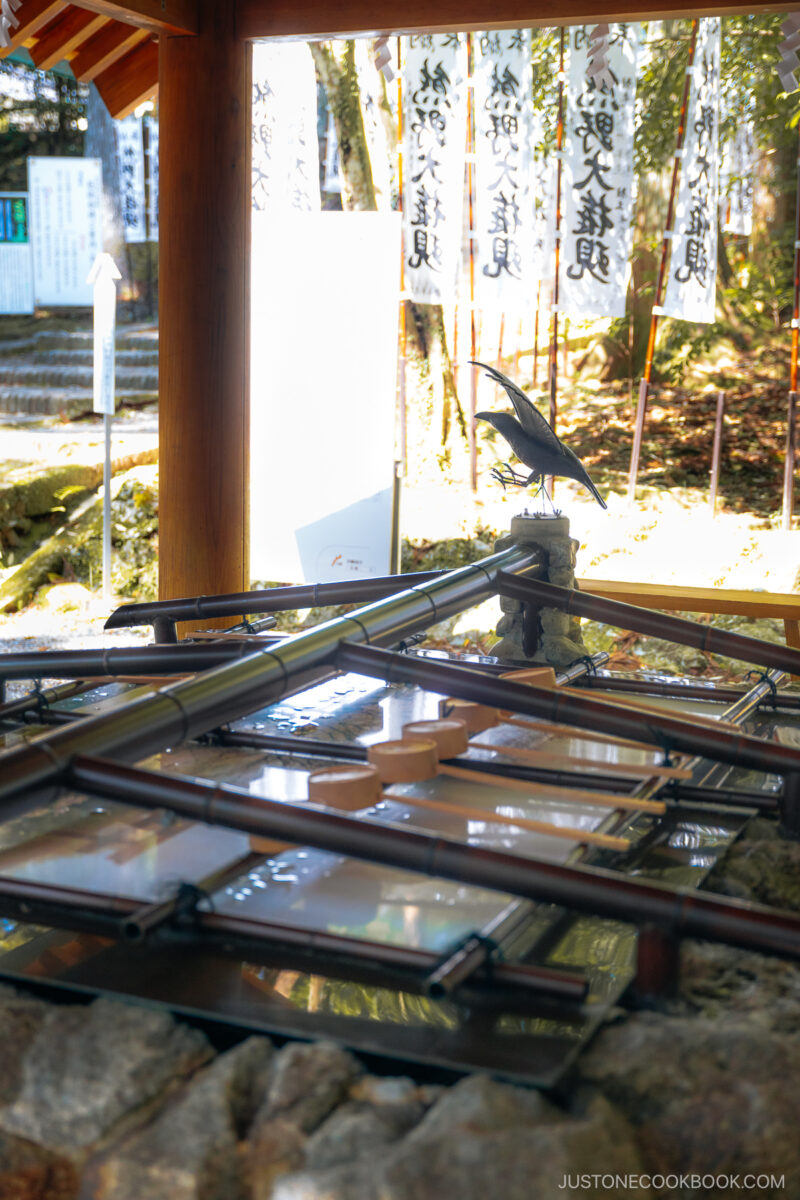

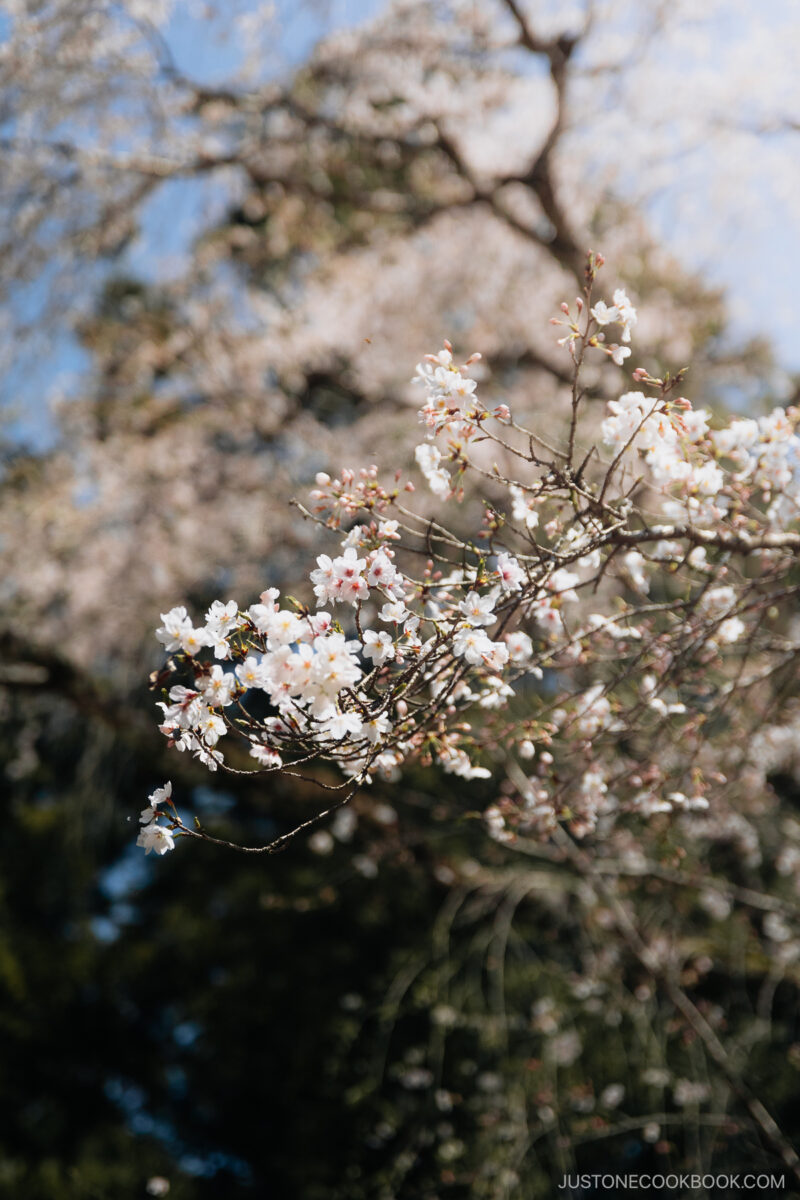

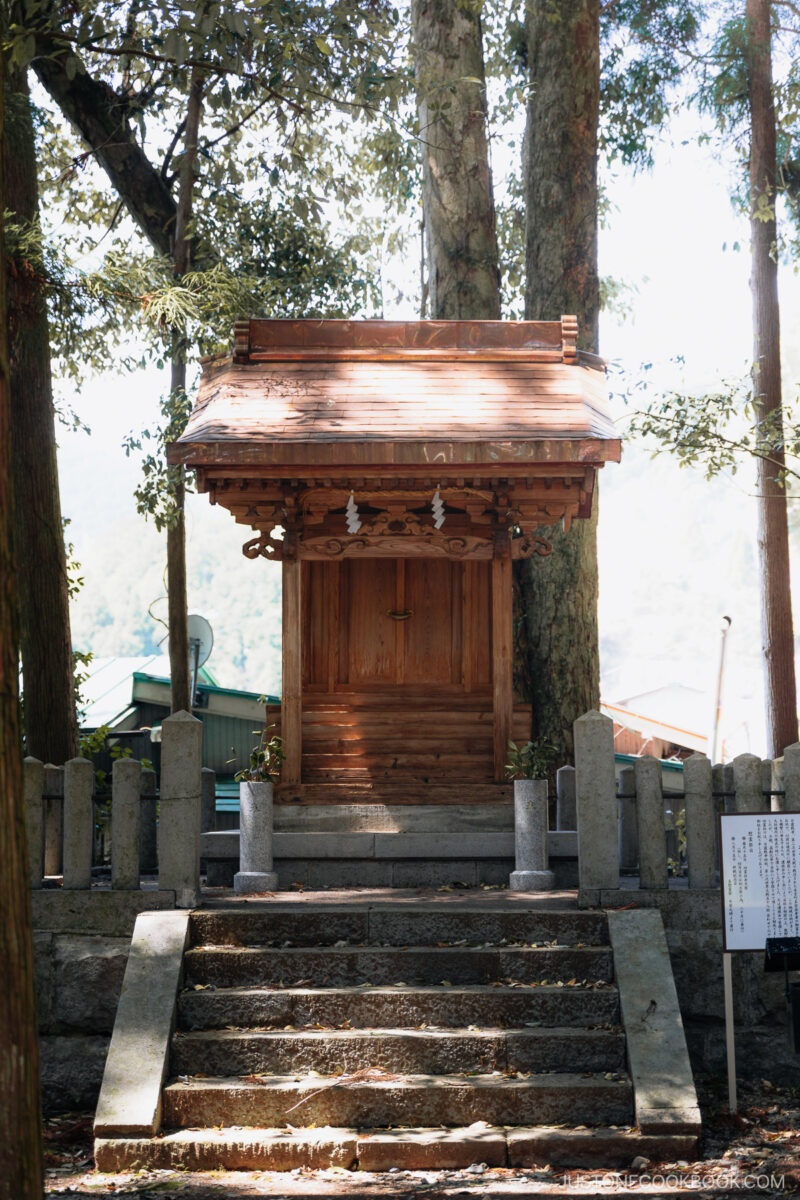

At the top of the stairs is a Jyuhosho (shrine shop), where you can pick up omamori (amulets), omikuji (fortunes), and various other shrine goods.
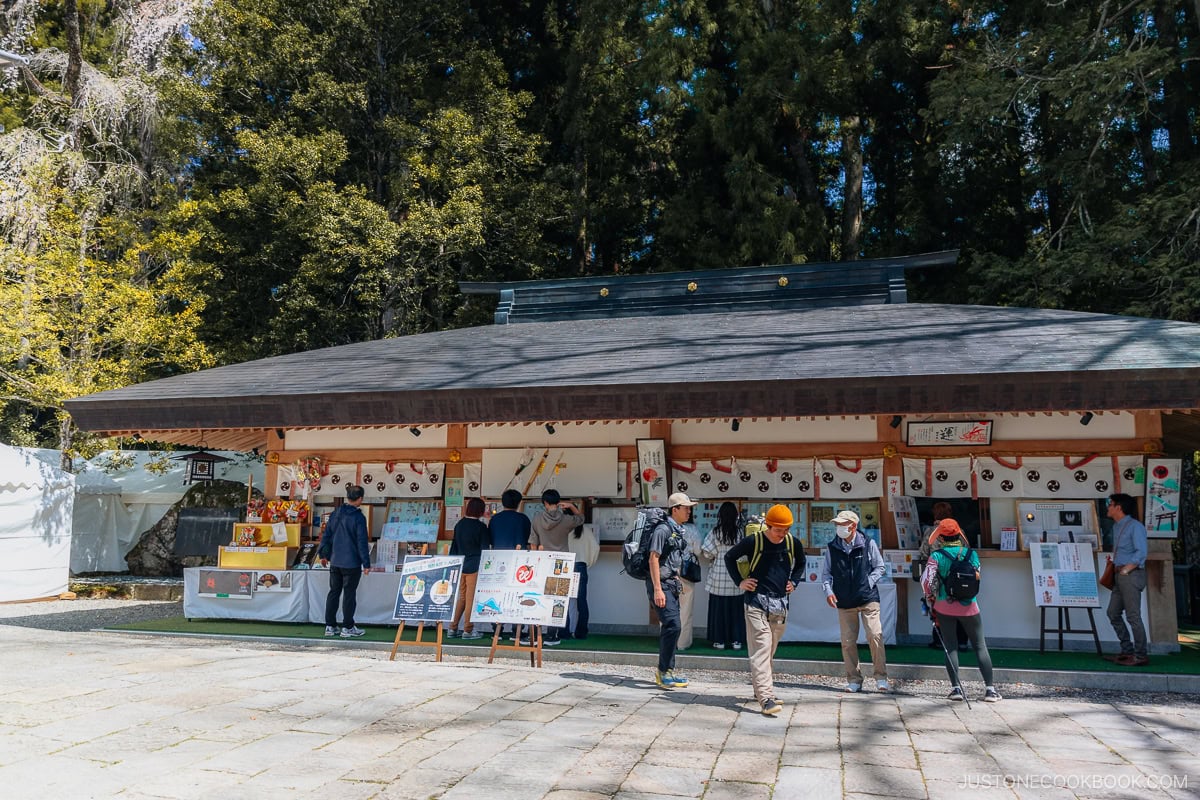

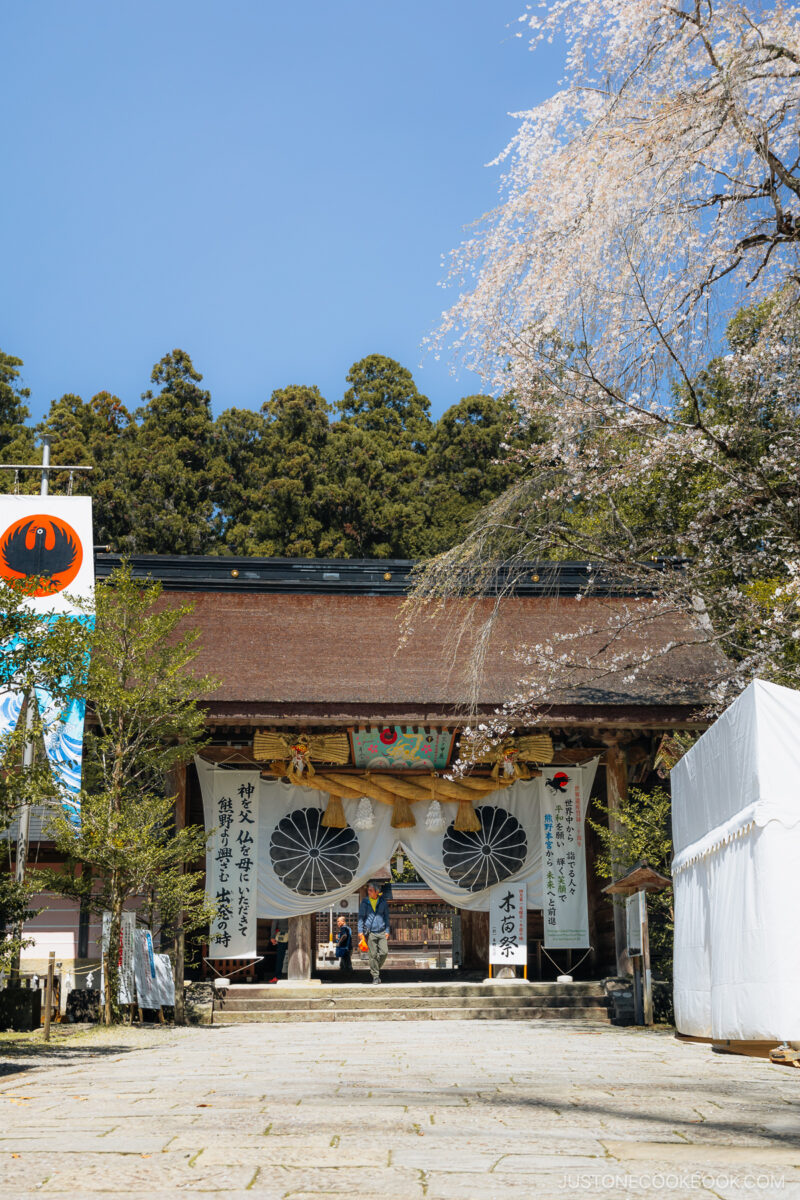

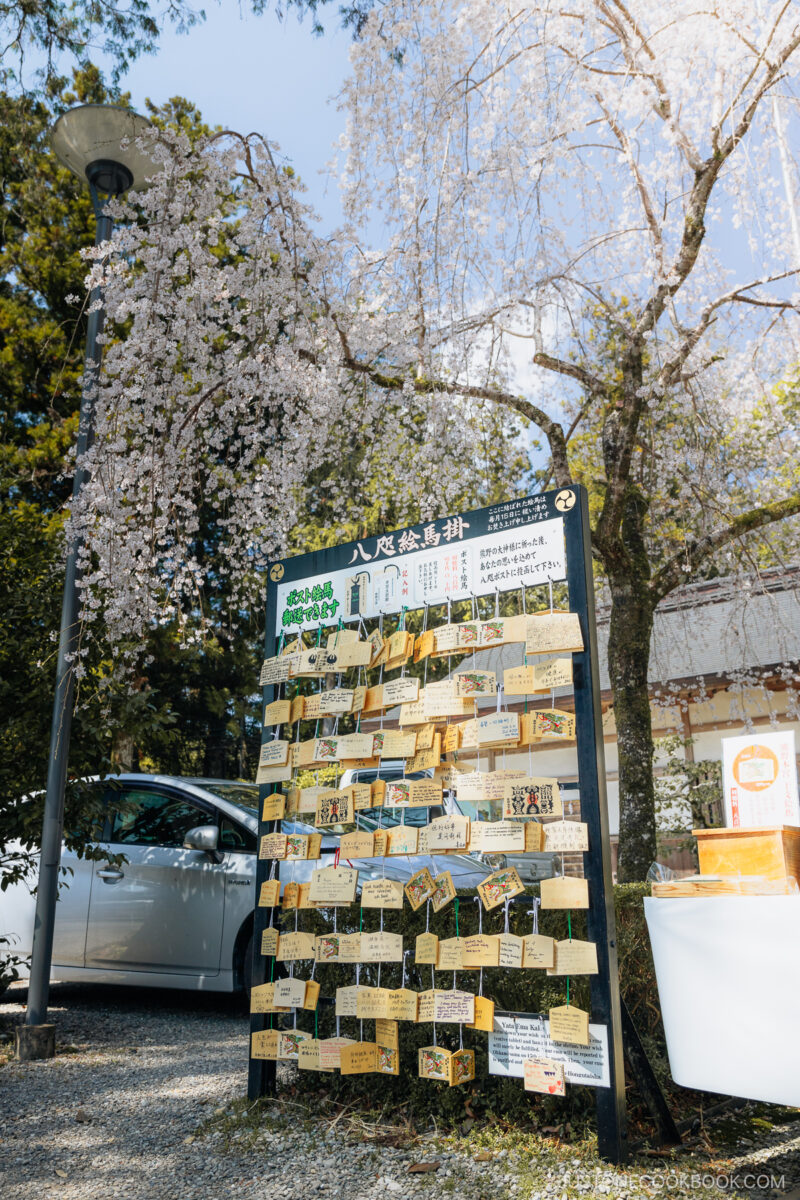



To the left is the shrine office, and just in front is the Hiden, where kannushi (Shinto priests) pray to gods on behalf of worshippers. Two Everythingstone lion-esque statues, sit to purge evil spirits from the sanctuary.
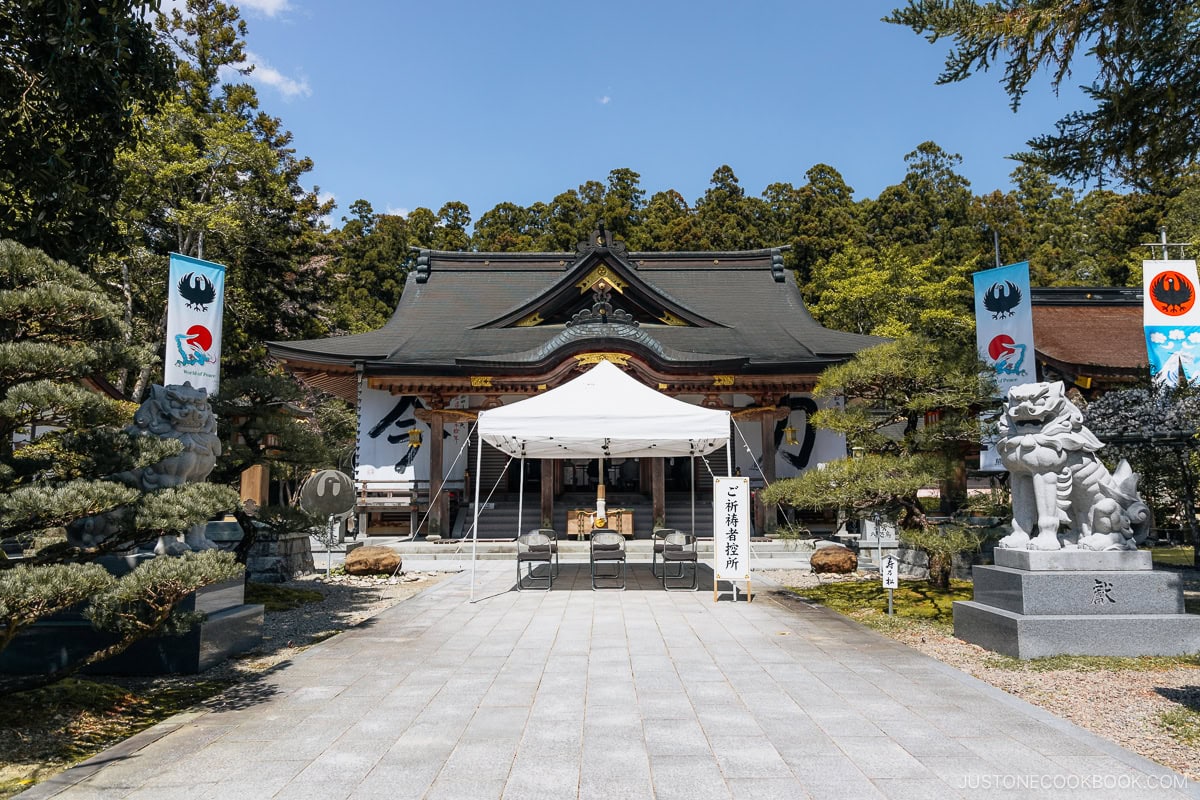

Passing through the Shinmon (entrance gate) leads to the Dogs (main hall), where you can appreciate the stunning architecture and thatched roof made from cypress shingles. The information board next to the Shinmon lists four different praying spots, each in a specific order.
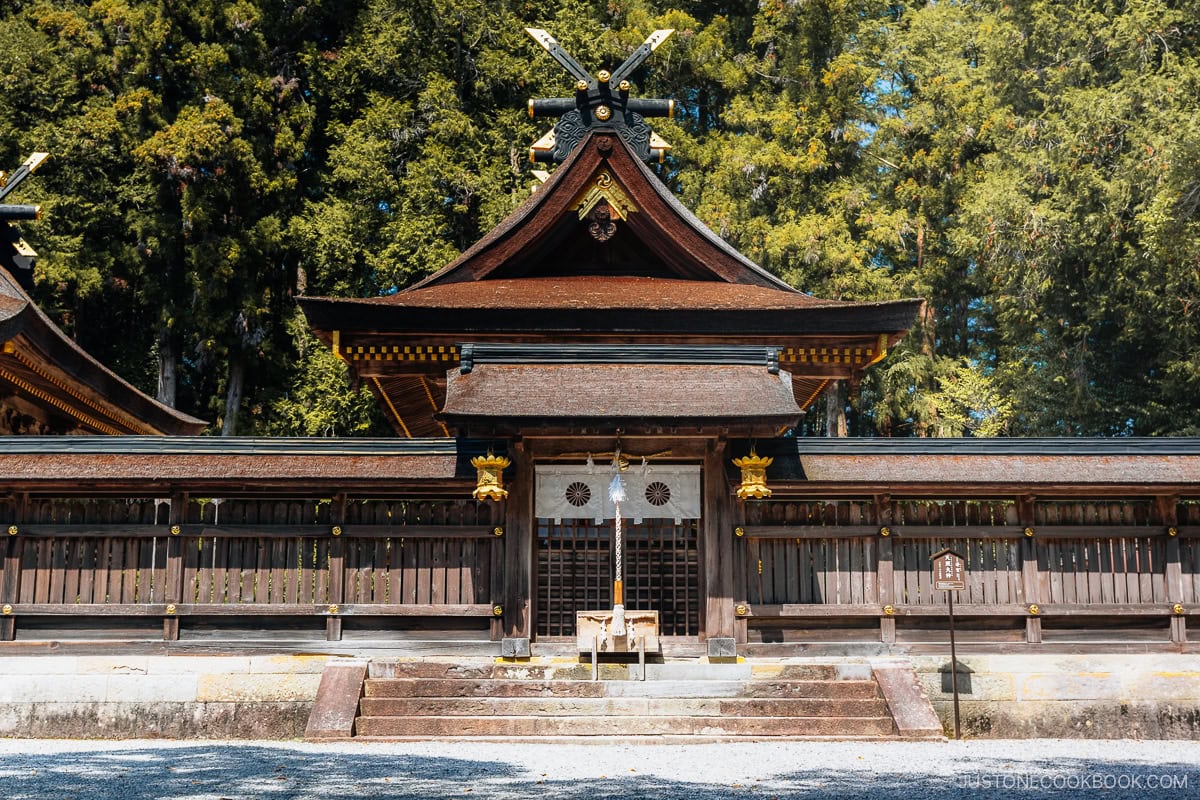

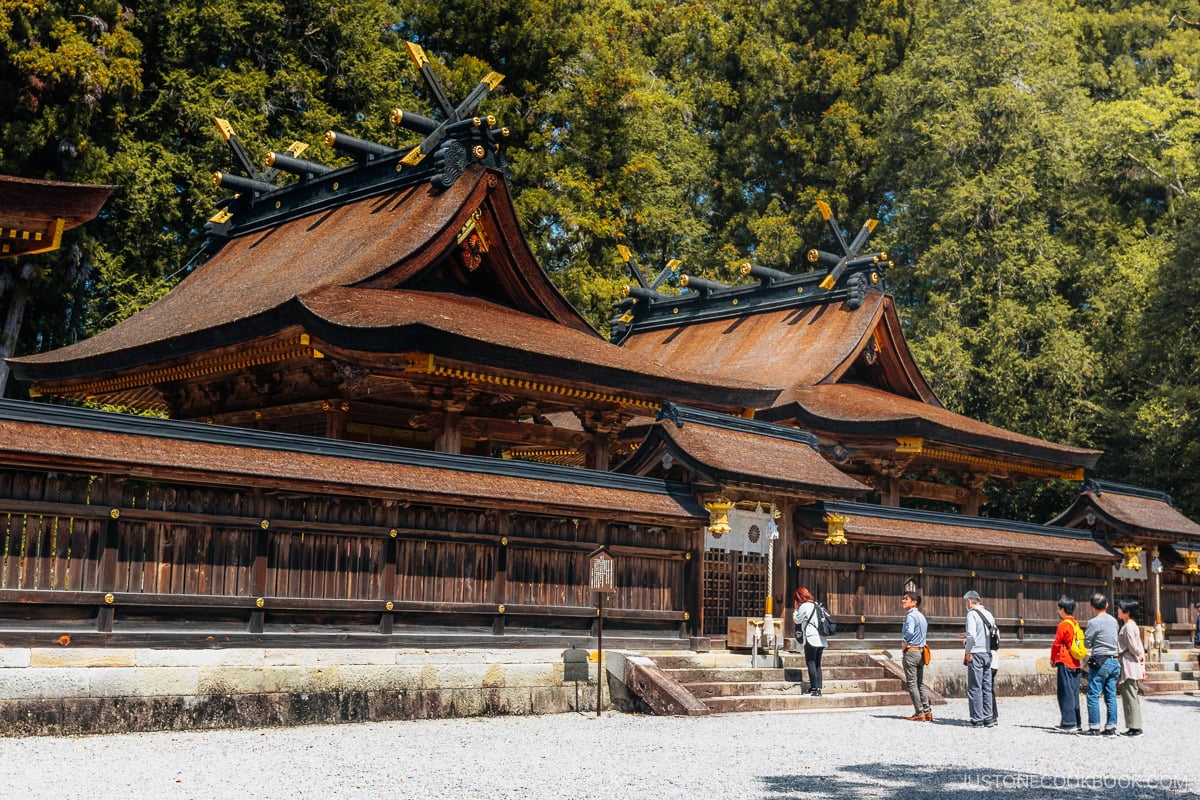

Kumano Hongu Taisha enshrines Izanagi-Okami, the deity who gave birth to Japan, and Ketsumimiko-Okami, who strives to help humanity. People visit to pray for harmony in their homes, a happy marriage, and a long life.
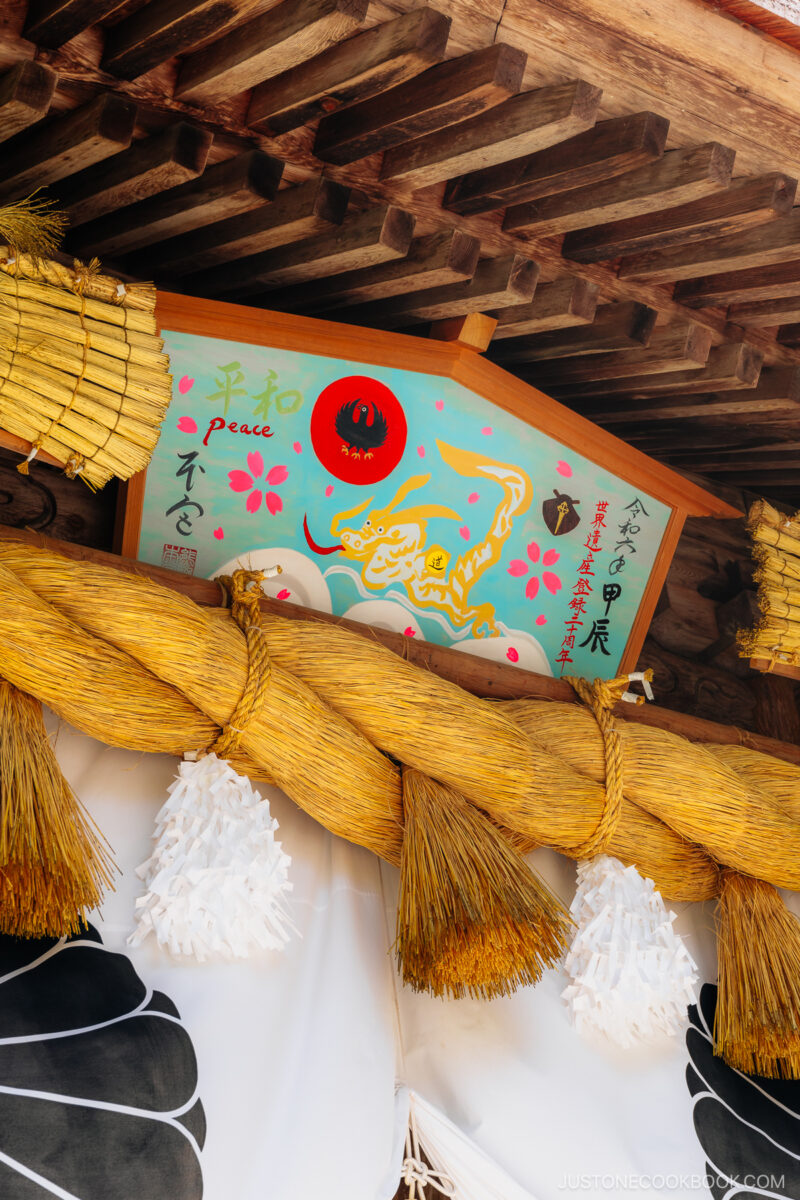



Spring and Autumn Festivals
Every spring, from April 13th to 15th, you can enjoy the Kumano Hongu Taisha Spring Festival. Fathers and sons purify themselves in the nearby Yunomine Onsen before walking over the Dainichi-goe section of the Kumano Kodo pilgrimage route to Oyunohara while wearing traditional costumes. The children have the kanji 大, meaning “big,” written on their foreheads and must be carried throughout the whole journey without touching the ground.
On April 15th, the festival culminates with a parade carrying a portable mikoshi shrine, housing the Kumano Deities. The mikoshi is spun and tossed in the air as it makes its rounds, purifying the village. It ends at Oyunohara with various rituals and celebrations, including fire rituals and a mochi rice cake scramble.
Unfortunately, I missed out by a couple of weeks, but I’ll have to make the journey back one day.
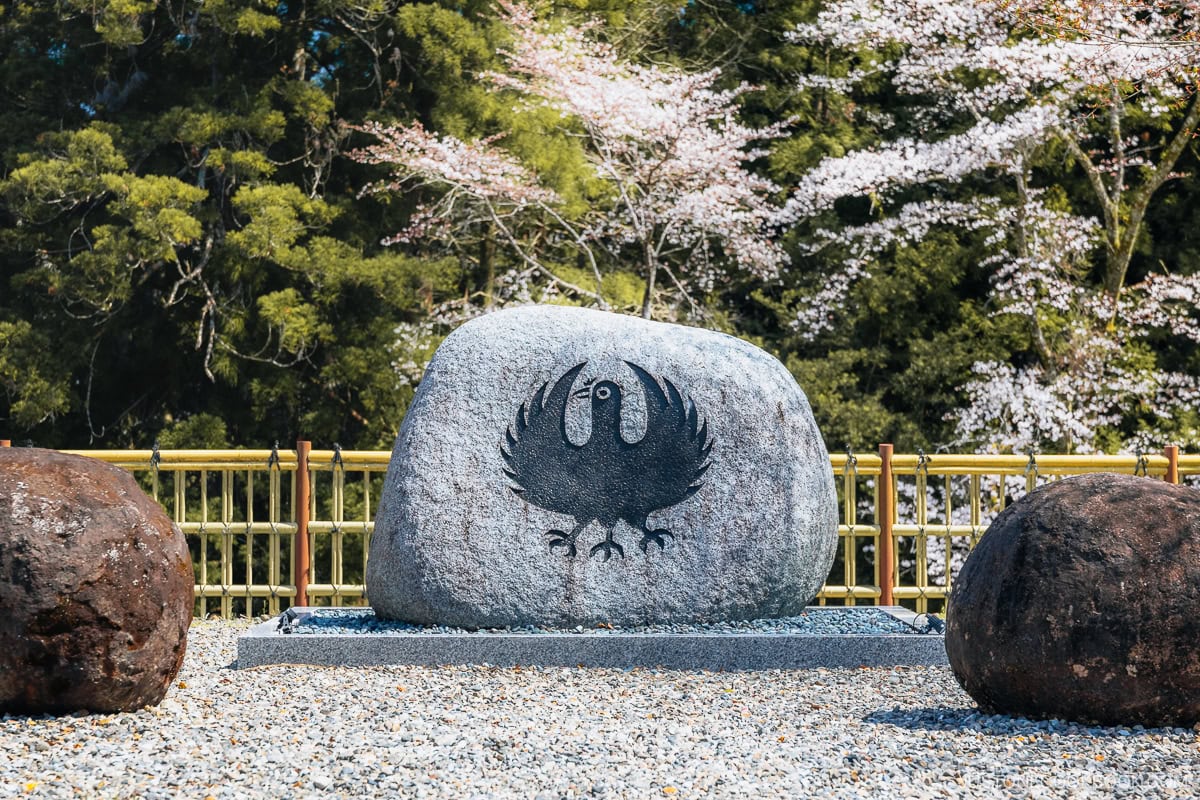

In August, don’t miss the Yata-no-Hi Fire Festival, which began in 1999. Legend has it that Yatagarasu, the three-legged crow, guided Emperor Jinmu when he became lost in the mountains of Kumano. In honor of this tale, a portable shrine made of steel and adorned with a Yatagarasu motif is carried by women in traditional costumes in a parade from Kumano Hongu Taisha to Oyunohara. The festival reaches its climax with a Taiko drum performance, traditional dancing, and fireworks!
Kitchen Restaurant Kitchen
Throughout the area, you can find various restaurants and cafes. As I visited on a Monday, a common holiday for shops in Japan, many were closed.
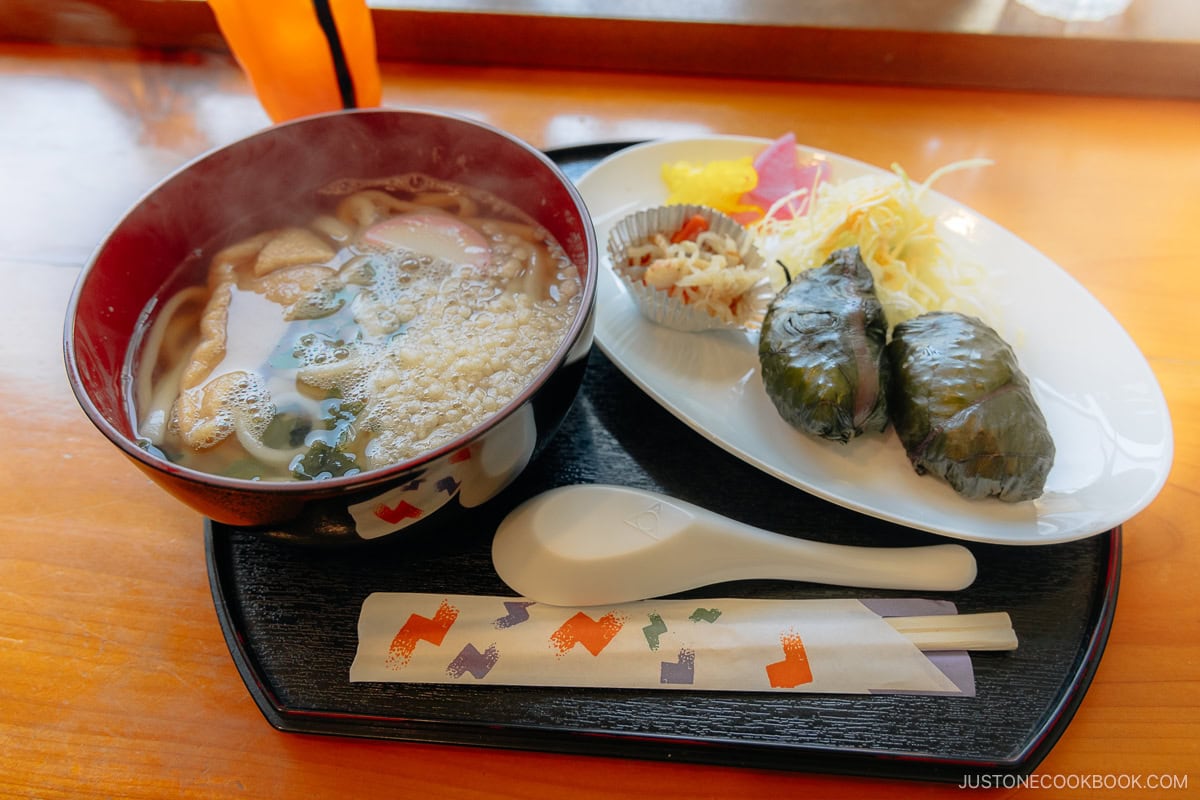

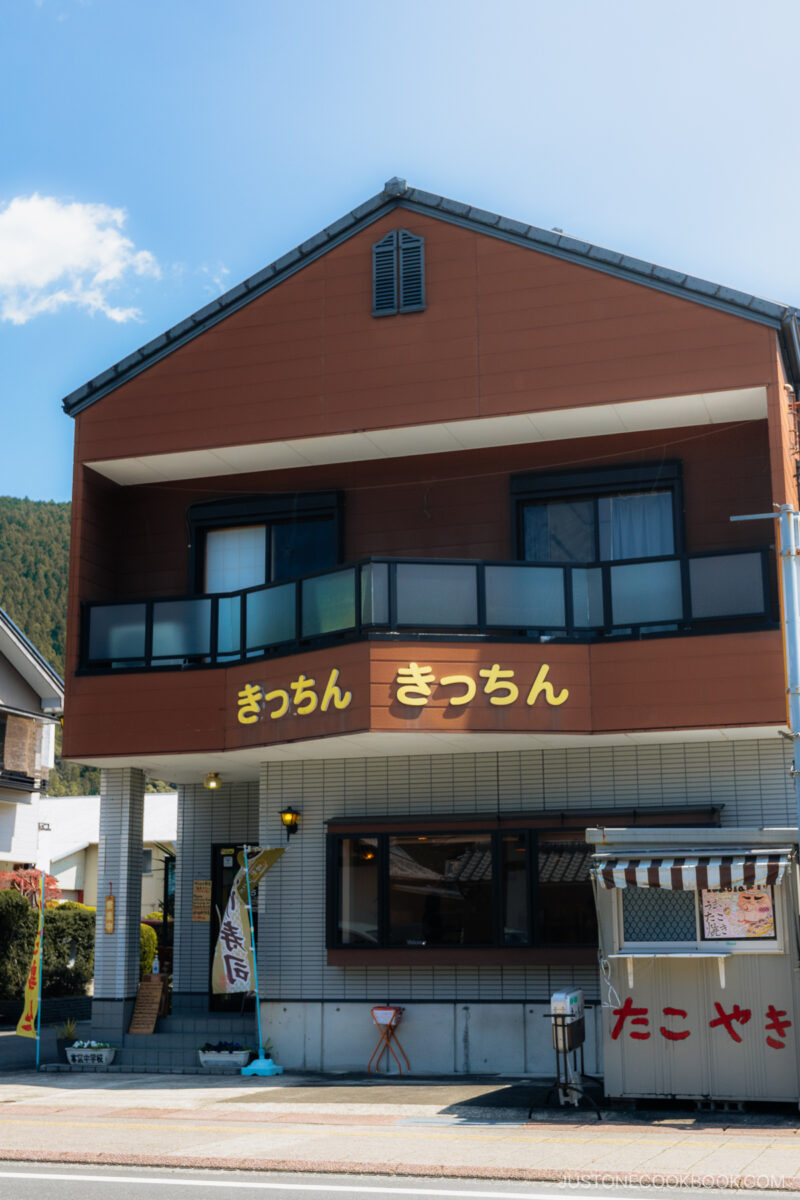

I decided on Kitchen, a small family-style restaurant, for a bowl of udon and mehairzushi (rice ball wrapped in mustard greens pickled in salt). Overall, it was a standard bowl of udon, nothing too special, but tasty enough to keep me fueled for more exploring!
Oyunohara: The Original Kumano Hongu Taisha
Just behind きっちん is Oyunohara (大斎原), the original site of Kumano Hongu Taisha. It is located on the sandbank at the confluence of the Kumano and Otonashi Rivers. In 1889, a great flood destroyed three of the shrine’s structures before it was decided to move the remaining ones to their current location.
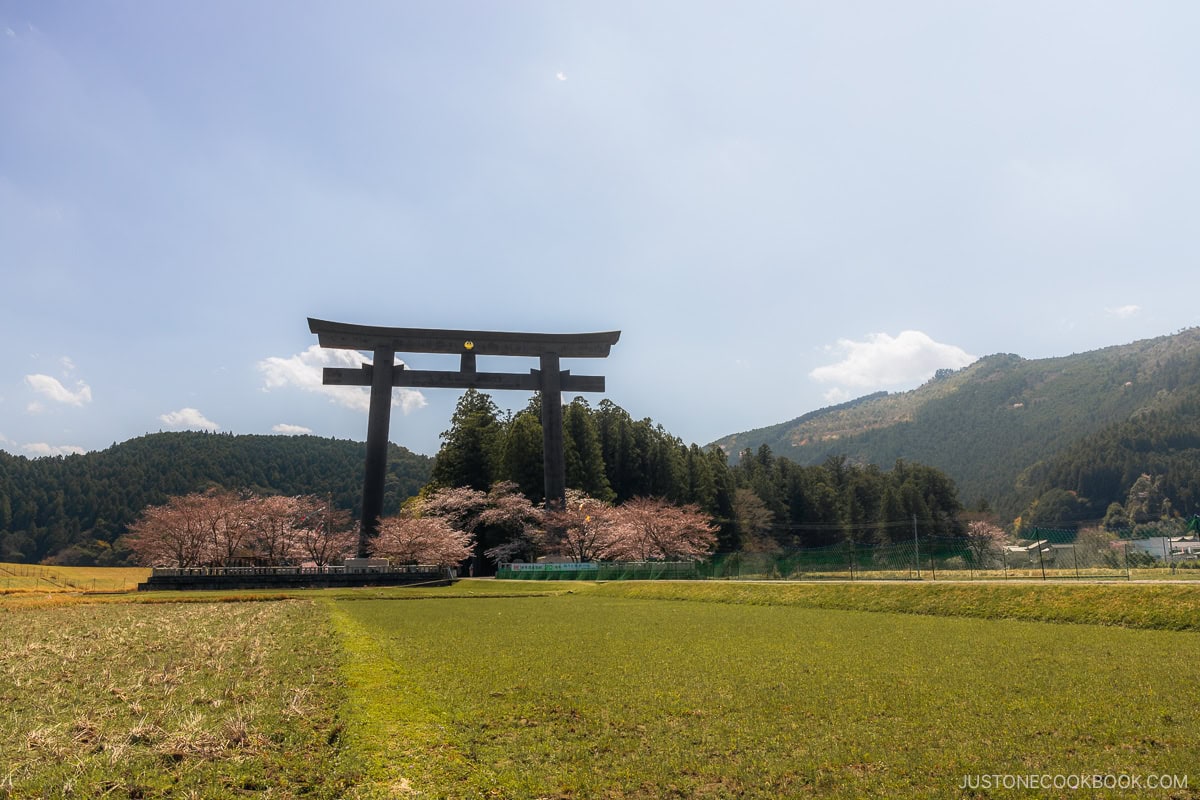

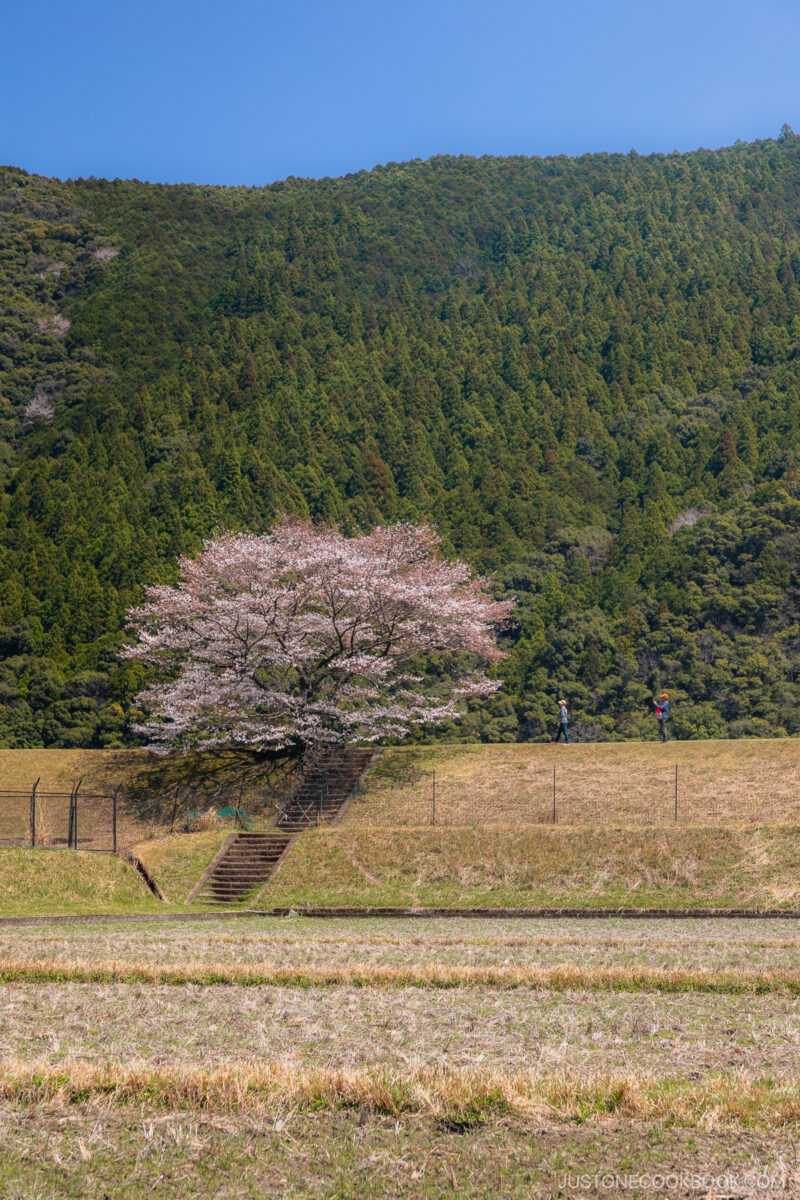

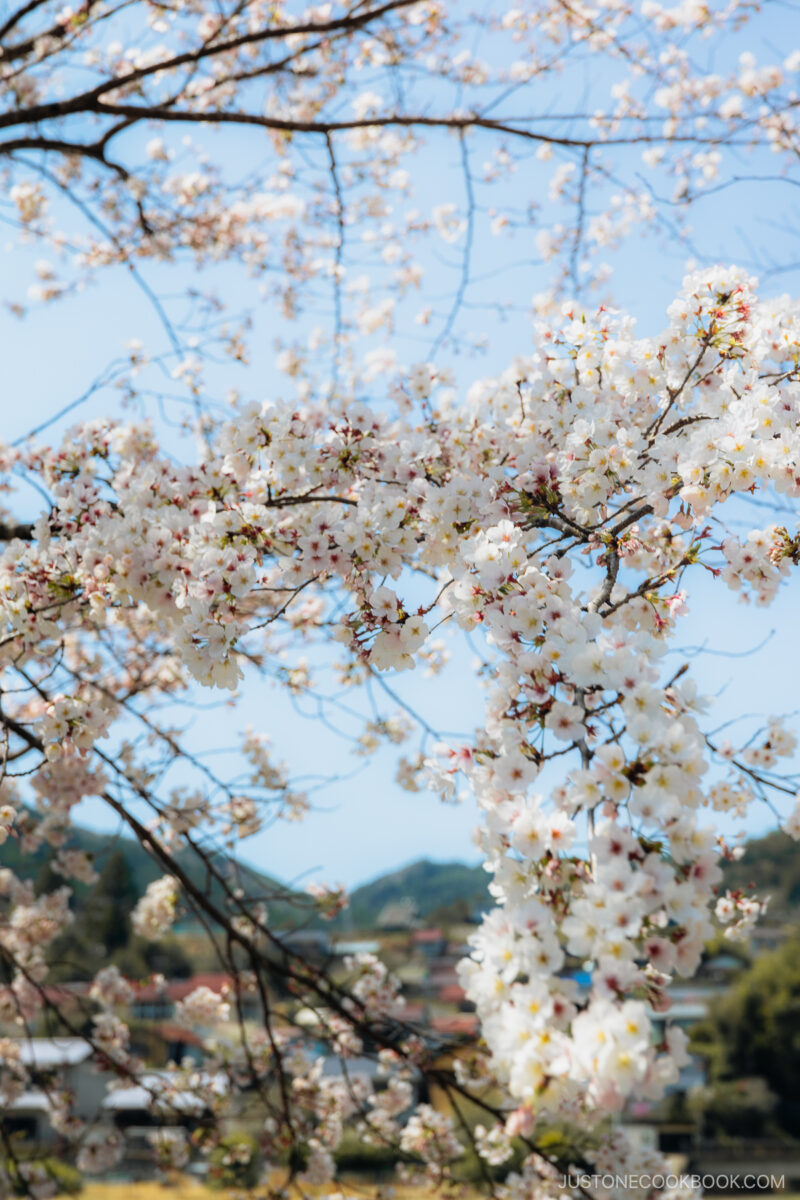

Its entrance is marked by the largest Torii gate in Japan, standing at a staggering 34 meters! The base is blanketed in a hue of pink during cherry blossom season.
The surrounding scenery allows you to appreciate Wakayama’s mountainous beauty and serenity as you embark on your spiritual adventure.
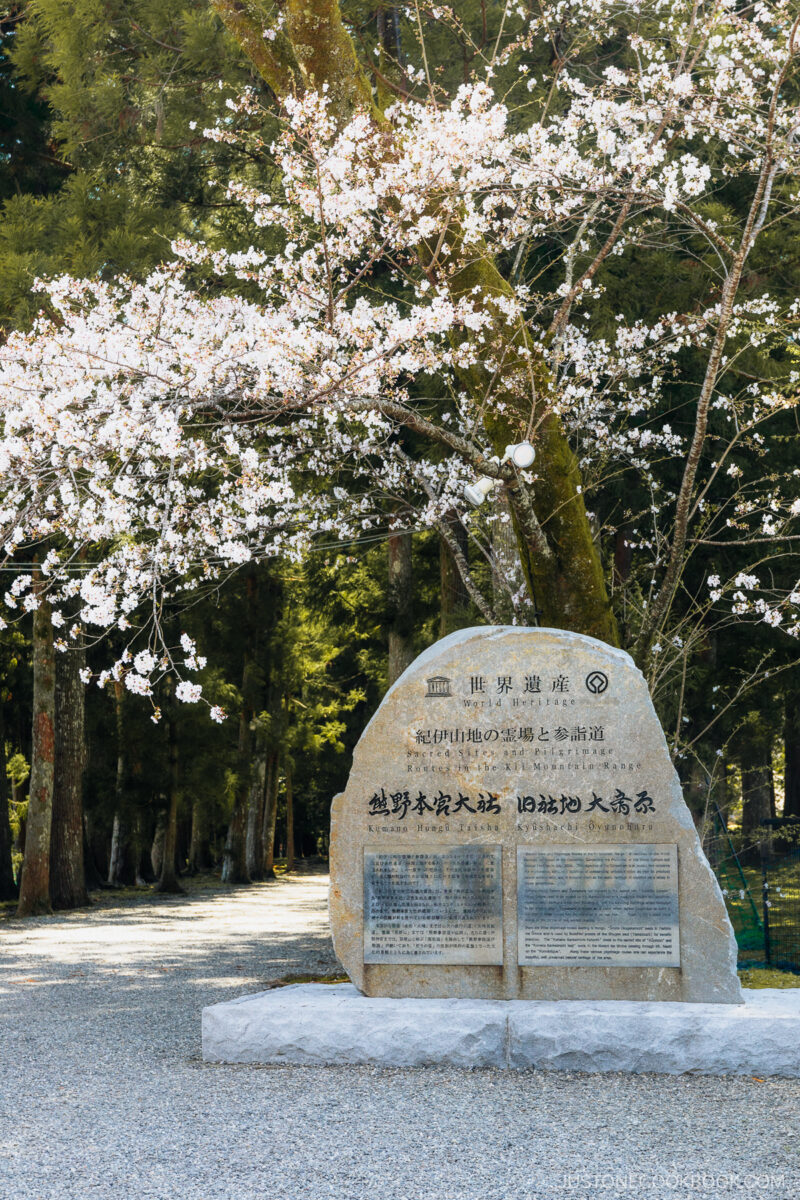

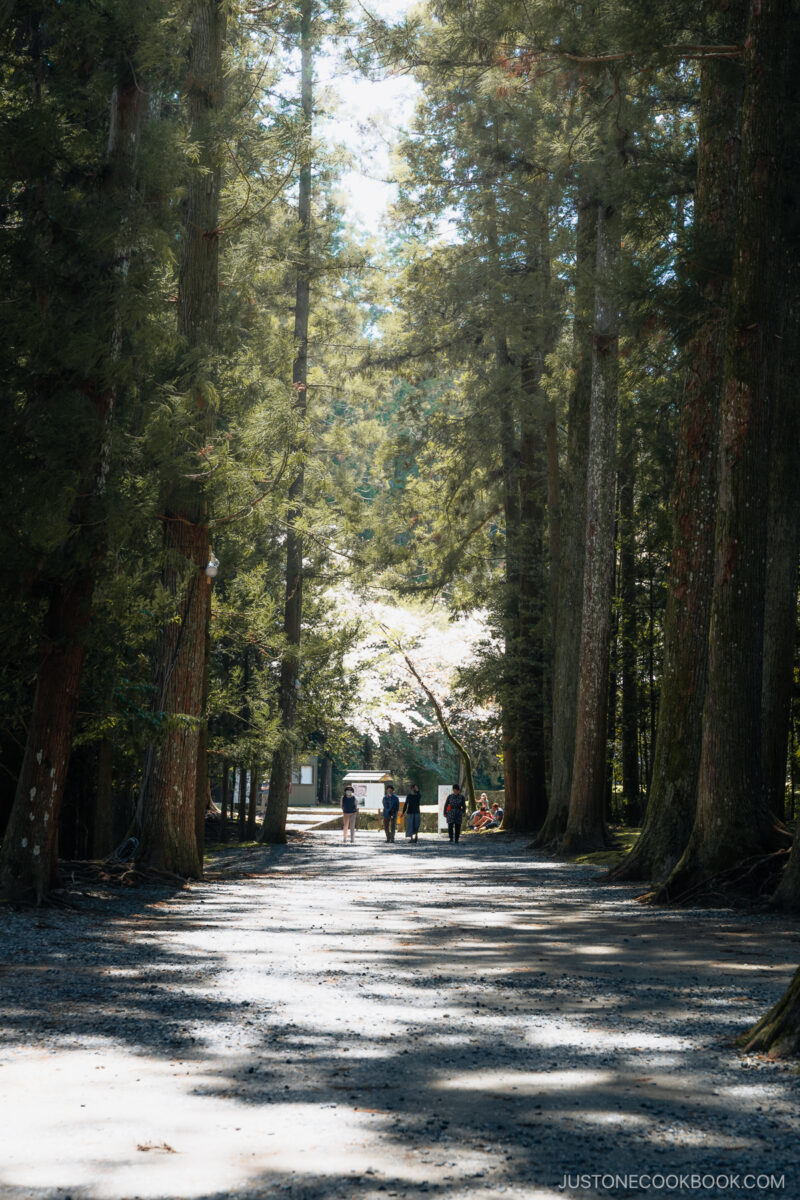

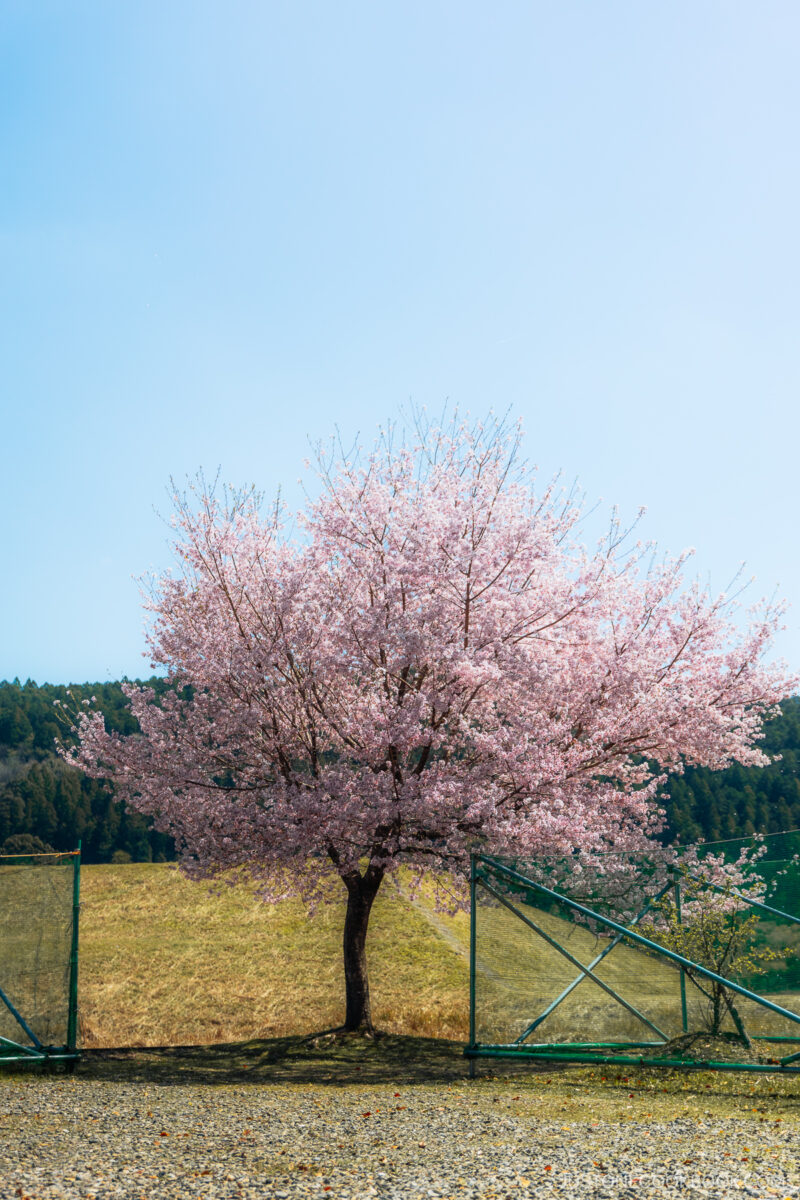

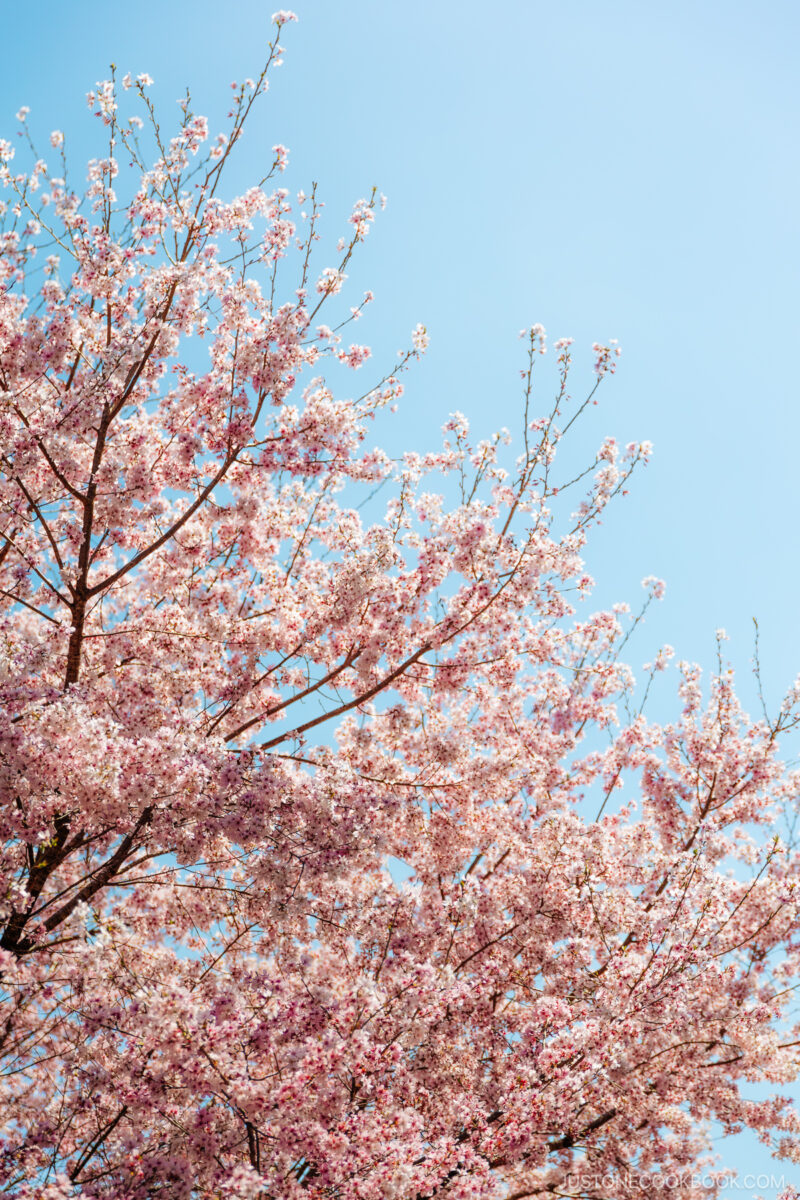

You’ll find a small stone shrine with even more cherry blossoms inside. Surprisingly, despite being in full bloom, there was next to no one there, making it a great spot to enjoy hanami (cherry blossom viewing). There were strong winds during my visit, so I also got to enjoy some sakura fubuki (cherry blossom snowstorm), as you can see on the Instagram reel!
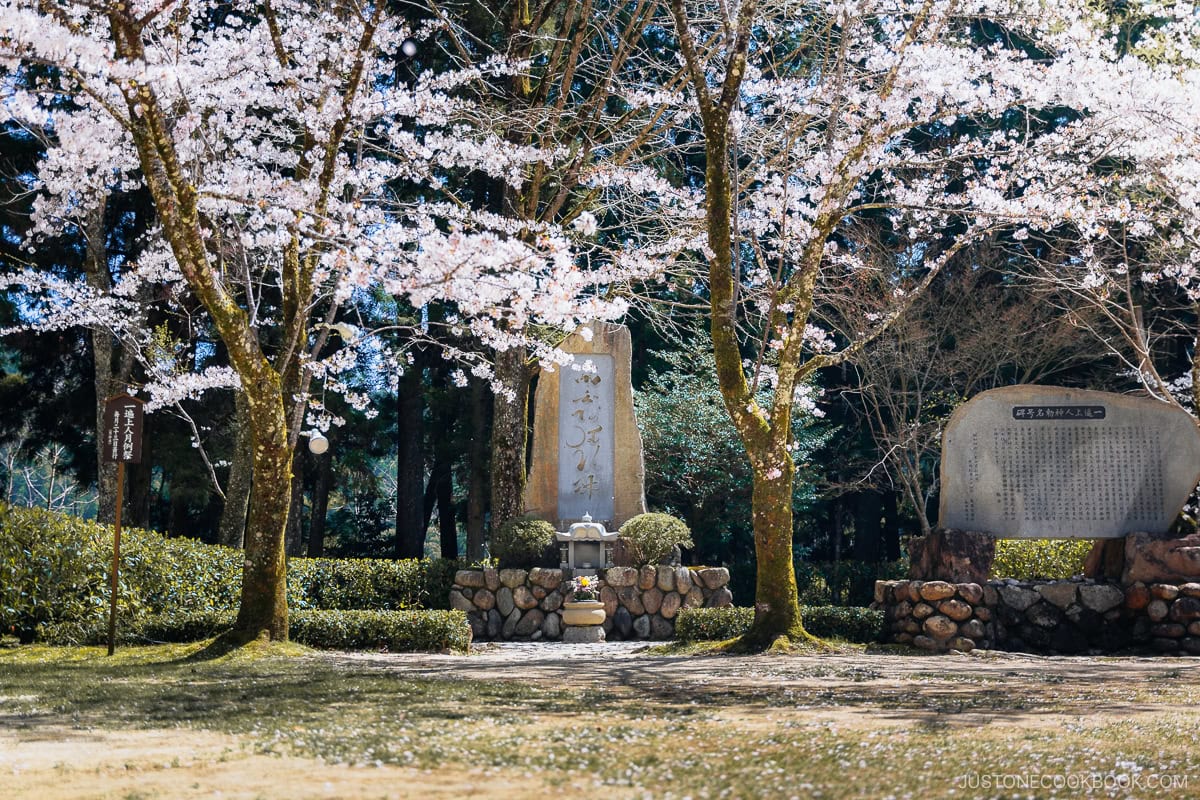

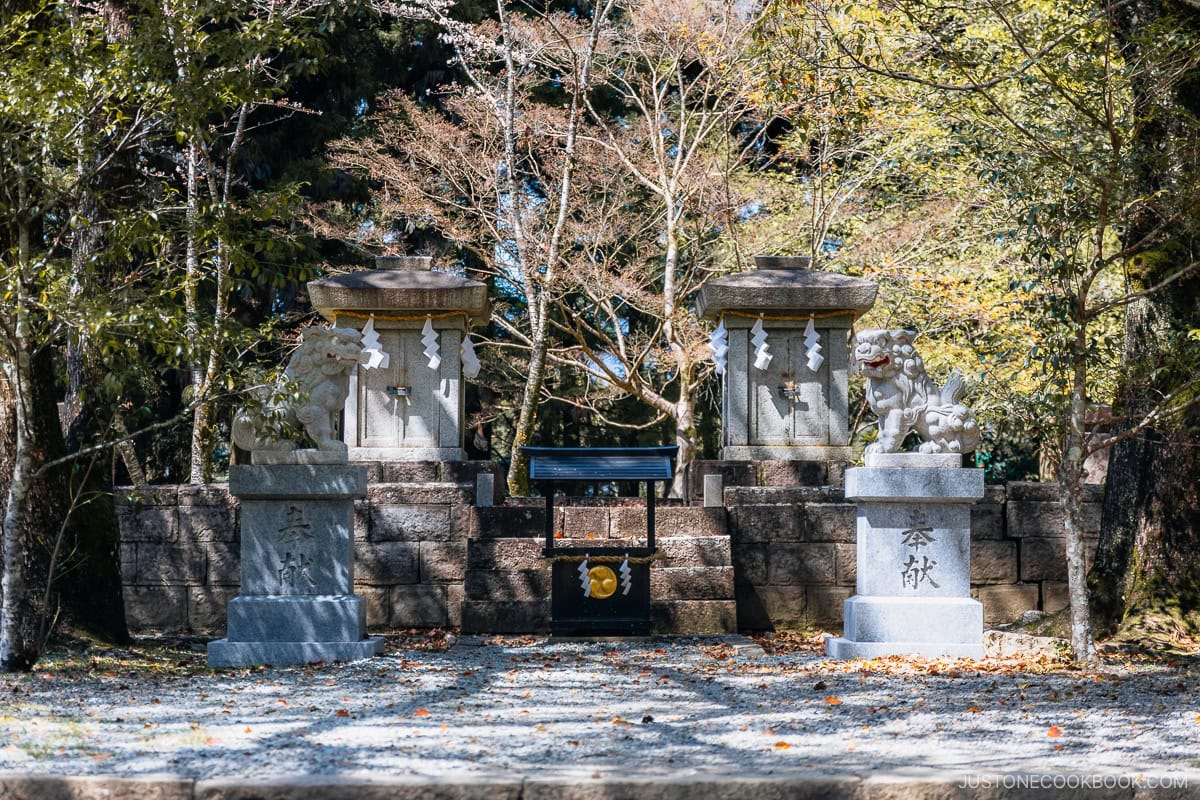

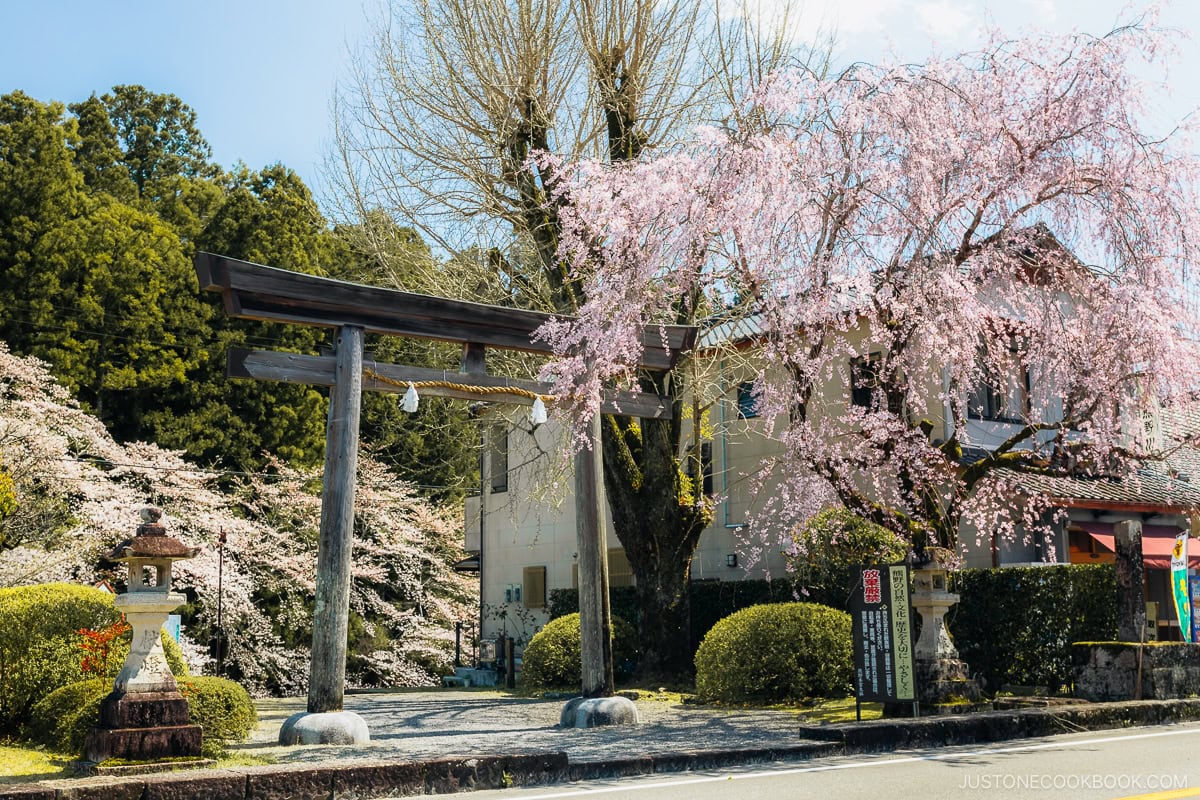

That wraps it up for Kumano Hongu Taisha! No matter which season you visit, there is breathtaking scenery to be found and endless exploring to discover Kumano’s rich history and traditions.


